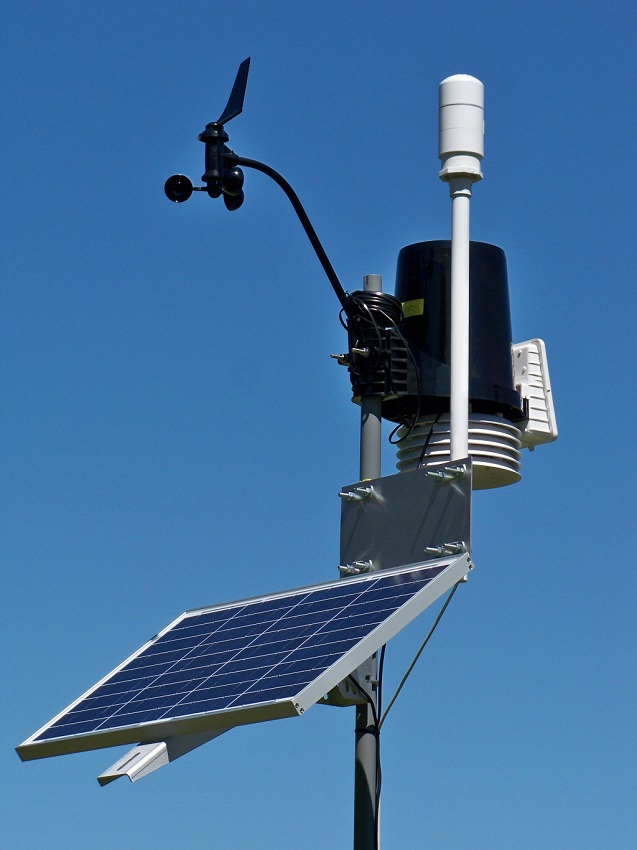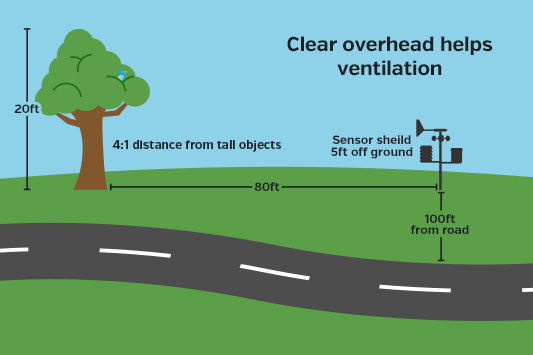RiskVA
Confusing Home Weather Stations 17 Jan 2007
Have you been watching our impressive weather systems? And are your home weather readings always different than what the TV weather people or newspaper report? That’s normal and here’s several reasons why.
Weather Is Not the Same Everywhere
Especially during stormy weather, rain often comes as localized squalls, showers, heavy downpours that cover very small areas. The south side of town may receive significant rain while residents in the north part of the city get nothing. Because of this you can’t even compare your information with other amateur weather spotters’ data. And, there is no way to tell what kind of instruments they are using or exactly where their sensors are placed.
Media data often comes from local airports where sensors are mounted on a building surrounded by pavement where temperatures are higher than you or I may record at home because roads, runways, building roofs and walls soak up the sun’s warmth there, causing the temperatures to register higher than they really are.
Temperature and Humidity
Instrument placement is critical. Thermometers and outside humidity sensors should be placed in a location shielded from direct sunlight, 4 or 5 feet above the ground, exposed to free air flow, not near objects that absorb or radiate heat and protected from precipitation. By the way, “temperature in the sun” compared with “temperature in the shade” are meaningless concepts. It only feels hotter in the sun because you are absorbing radiant energy. A thermometer in the sun soaks up this energy too, causing it to show the temperature of the instrument itself instead of only the air around it.
Temperatures shown on those miserable, light polluting, illuminated and digital signs on banks and other buildings are frequently way off because their sensors are inside the sign itself or other bad locations.
Unfortunately, most electronic humidity sensors are notoriously off and need to be calibrated regularly using a sling psychrometer, a device with two thermometers, one dry and the other with a wet wick attached to its bulb. Most casual observers don’t have access to such calibration instruments, so you’ll have to settle for something less than perfection by comparing your reading with media information.
Incidentally, you may notice that the humidity reading at your home is less than 100% even when it’s raining. That’s normal. The relative humidity in the cloud the rain came from is 100% but at ground level it may not be.
Wind, Rain, and Barometric Pressure
Wind instruments ideally should be at least 1/3 farther away from buildings than the height of the nearest structure and 15 to 20 feet in the air. Typically, people mount them on a TV mast just over the crest of their roof, a location that gives bad speed and direction readings because wind is forced to swoop over and around the building. Again, most people have to compromise on location.
Rain gauges should be mounted 3-4 feet off the ground the same distance from objects that wind direction and speed sensors are located. Otherwise, wind swirling around can produce inaccurate readings.
Barometers should be adjusted for your elevation or you can use the pressure reading from your local TV weather reporter. Barometers, especially decorative types have words like “stormy, rain, change, fair, dry” on their dials that really don’t tell you much. Barometers indicate whether atmospheric pressure is falling, stable or rising, but other factors including upper level atmospheric pressure and temperature that won’t show up on your barometer are also important weather controllers.
Incidentally, it is not necessary to mount a barometer outdoors. Because buildings are not air tight, the pressure indoors is the same as outdoors. If that were not the case, as the pressure outside dropped, a building’s wall would try to pop out or squeeze in as pressure rises.
In a nutshell, if you aren’t getting the same readings as reported by the media or your friend on the other side of town or even across the back fence, don’t be discouraged. There are many factors at work, all of which interact, and it’s still educational and a lot of fun to keep track of weather information. Weather and climate have major influences on everything on the earth and as you observe, your understanding and appreciation of your world will increase.
If you’d like to visit a great Web site that can painlessly help you learn more about weather, try ww2010.atmos.uiuc.edu. Then click on ‘guides’ and ‘meteorology’ and you’ll find a lot of easy to understood, useful information about weather and climate.
Dr. Risk is a professor emeritus in the College of Forestry and Agriculture at Stephen F. Austin State University in Nacogdoches, Texas. Content © Paul H. Risk, Ph.D. All rights reserved, except where otherwise noted. Click paulrisk2@gmail.com to send questions, comments, or request permission for use.


